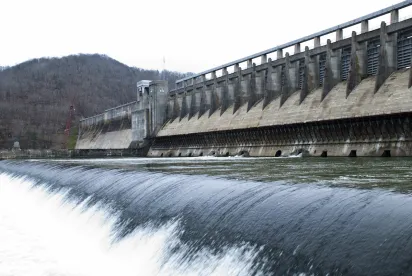Background
Over the last several decades, cities and other municipal entities (such as water reclamation districts) that own and operate wastewater treatment plants and sewer systems have been subjected to additional and increasingly stringent regulatory requirements under the Clean Water Act (CWA).
These requirements emanate from several distinct CWA programs, including those that address control of nutrients and other discharges from municipal treatment plants (also called publicly owned treatment works, or POTWs); systems that combine domestic effluents and stormwater (which give rise to combined sewer overflows, or CSOs); municipal separate storm sewer systems (MS4s); wasteload allocations in total maximum daily loads (TMDLs); and other CWA requirements. Each of these requirements is imposed independently, but the combined impact on the municipal operations, and on the financial status of the community and its residents, can be enormous.
To address these municipal concerns, EPA, in 2012, adopted a policy that allows municipalities to do an “integrated plan” or an IP. In an IP, the municipality can assess all of the CWA requirements that apply to its operations and prioritize them in a manner that seeks to maximize the environmental benefit from using the available resources. Several communities (including Lima, Ohio; Springfield, Massachusetts; and Evansville, Indiana) have used the IP process and have found that it can help them reduce their economic burdens while better protecting water quality.
However, broad implementation of the IP process has not proceeded quickly. Many communities have found that EPA Regions and States within which they operate are hesitant to use this new mechanism. Also, without clear statutory authorization, there is some concern about the long-term stability and continuity of the program. To address these concerns and to provide clear legal authority for IPs, Congress passed the Water Infrastructure Improvement Act – H.R. 7279, now Public Law 115-436, which provides Congressional support for use of the IP process on a long-term basis. The president signed the act into law on Jan. 14, 2019.
The new law’s IP provisions ensure that each community must be informed by their permitting authority (in most cases, the State) that it has the opportunity to develop an IP that can be incorporated into its CWA permit. The permit can then incorporate all regulatory requirements addressed in the IP – and may include projects to reclaim, recycle or reuse wastewater, as well as green infrastructure measures. IP permits can contain compliance schedules, which can last longer than one permit term. IPs can also be developed by communities in enforcement actions, and communities that develop IPs can request that their enforcement orders or decrees be modified based on the provisions in the IP. To ensure that EPA is held accountable for the effective implementation of the IP program, the Agency has to prepare a report to Congress on IPs, and make that report publicly available, within two years after the new law was enacted. The report must contain information on all IPs developed and implemented since EPA’s guidance was issued in 2012.
In addition to codifying the IP process, the new law also contains provisions that promote the use of “green infrastructure” measures, such as porous pavement and green roofs. Many communities have sought to use these measures to reduce stormwater discharges without the need to build extensive and costly “gray infrastructure” (GI) systems, such as storage tanks and underground tunnels. However, implementation of GI concepts by EPA and other federal agencies has been inconsistent – sometimes encouraging and promoting their use, and sometimes imposing such extreme restrictions on their implementation that communities simply build gray systems instead. The GI provisions in the Water Infrastructure Improvement Act are intended to require EPA to work actively to promote GI use (within existing legal authorities), and to coordinate the GI policies that are being implemented by EPA offices and other agencies.
In navigating the myriad CWA requirements that are imposed on their operations, municipalities have often found it difficult to have their community-specific concerns heard by EPA. They have also found it challenging to access financial information and other resources that are available to them through EPA. Therefore, the new law includes one other provision: it creates a new office at EPA for a Municipal Ombudsman. The ombudsman’s office will assist municipalities by providing them with information and assistance, and will also have the responsibility of providing information to EPA Administrator to ensure that the Agency policies as to CWA obligations of municipalities are consistently implemented by all EPA offices, including EPA Regions.
Specific Provisions of New Law
1. Integrated Planning
- EPA (or the State if the State has been delegated a National Pollutant Discharge Elimination System NPDES permit authority) must inform communities of the opportunity to develop an integrated plan that may be incorporated into the municipality’s permit.
- A permit incorporating an integrated plan may integrate all regulatory requirements addressed in the plan, including requirements related to: (1) a combined sewer overflow, (2) a capacity, management, operation and maintenance program for sanitary sewer collection systems, (3) a municipal stormwater discharge, (4) a municipal wastewater discharge, and (5) a water quality-based effluent limitation to implement an applicable wasteload allocation in a total maximum daily load.
- An integrated plan incorporated into a permit may include the implementation of (1) projects, including innovative projects, to reclaim, recycle, or reuse wastewater; and (2) green infrastructure.
2. Compliance Schedules in Integrated Planning Permits
- A permit incorporating an integrated plan can contain a compliance schedule, which can be longer than one permit term if the compliance schedule is authorized by the State water quality standards and meets the requirements of EPA regulation concerning compliance schedules, 40 CFR 122.47.
- The requirement in EPA regulations (40 CFR 122.47) for compliance by an applicable statutory deadline does not prohibit implementation of an applicable water quality-based effluent limitation over more than one permit term.
- Nothing in the CWA provision regarding compliance with water quality-based requirements (Section 301(b)(1)(C)) precludes including a compliance schedule in an integrated planning permit.
- A compliance schedule can be reviewed each time that the permit is renewed, to determine whether the schedule should be modified.
3. Implementation of Integrated Plans Through Enforcement
- In any CWA enforcement action relating to municipal discharges, EPA must inform the municipality of the opportunity to develop an integrated plan.
- Any municipality under a CWA administrative order or settlement agreement (including a judicial consent decree) that has developed an integrated plan may request a modification of the order or agreement based on the integrated plan.
4. Report to Congress on Integrated Plans
- Within two years after enactment, EPA must submit a report to Congress on integrated plans, which must contain information regarding each integrated plan that has been developed and implemented under the CWA since the publication of EPA integrated planning framework in 2012. The report must also be made publicly available.
5. Municipal Ombudsman
- An Office of Municipal Ombudsman has been created at EPA.
- The ombudsman will have duties that include providing technical assistance to communities seeking to comply with the CWA, and providing information to the administrator to help ensure that Agency policies are implemented by all EPA offices, including Regional offices.
- The ombudsman will work with headquarters and Regional offices to ensure that communities are provided information about available federal financial assistance, about flexibility available under the CWA, and about the opportunity to do an integrated plan.
- The ombudsman will publish, on EPA’s web site, general information related to technical and financial assistance to municipalities, flexibility available under the CWA, and resources developed by EPA related to integrated plans.
- The ombudsman will also publish on the website, a copy of each permit, order, or judicial consent decree that implements or incorporates an integrated plan.
6. Green Infrastructure
- EPA must promote the use of green infrastructure in, and coordinate the integration of green infrastructure into, CWA permitting and enforcement, planning efforts, research, technical assistance, and EPA funding guidance.
- EPA must ensure that the Office of Water coordinates efforts to increase use of green infrastructure with other federal agencies, State, tribal and local governments, and the private sector.
- EPA must direct each Regional office, as appropriate based on local factors, and consistent with the requirements of the CWA to promote and integrate the use of green infrastructure within the Region, including outreach and training, and incorporation of green infrastructure into permitting and other regulatory programs, codes, and ordinance development, including requirements under consent decrees and settlement agreements in enforcement actions.
- EPA will promote green infrastructure information sharing, including through a web site.
7. Savings/Transition Provisions
- Nothing in the integrated planning provisions reduces or eliminates available flexibility under the CWA, including the authority of a State to revise a water quality standard after a Use Attainability Analysis, subject to EPA approval.
- A compliance schedule issued in a permit shall not revise a compliance schedule in a judicial order or decree resolving a CWA enforcement action to be less stringent, unless the order or decree is modified by agreement of the parties and the court.
- Nothing in the integrated planning provisions modifies any obligation to comply with applicable CWA technology and water quality-based effluent limitations.
Analysis of New Provisions and Practical Impacts
The Water Infrastructure Improvement Act provides several tools that municipalities can use to improve their programs for CWA compliance – to make them more effective, less confusing, and to reduce the onerous financial burdens on the communities and their ratepayers. Each community should, for example, consider carefully assessing whether developing an integrated plan will be useful to address its particular compliance obligations. The new law emphasizes incorporation of IPs into permits, rather than enforcement orders or decrees, so each community doing an IP will want to explore use of the permit mechanism rather than the enforcement tools that are usually used by EPA and the States. In developing IP permits, long-term compliance schedules should now be available for use, to ensure that the community has enough time to implement its compliance requirements in a reasonable and affordable manner. Also, the community should be able to include innovative projects in its IP, including reclaim/reuse/recycle programs and green infrastructure measures.
Beyond use of the IP process, communities should be able to utilize other opportunities provided by the new law, whether they are developing an IP or dealing with their CWA issues in another way. To the extent that the community wants to use green infrastructure, for example, it can now point to the clear congressional message that EPA should be promoting – not discouraging – use of GI measures. And, even if it is not using GI or developing an IP, a community can seek the help of the new ombudsman if it encounters difficulties in dealing with EPA demands, or if it needs assistance in accessing EPA financial or informational resources.





 />i
/>i
